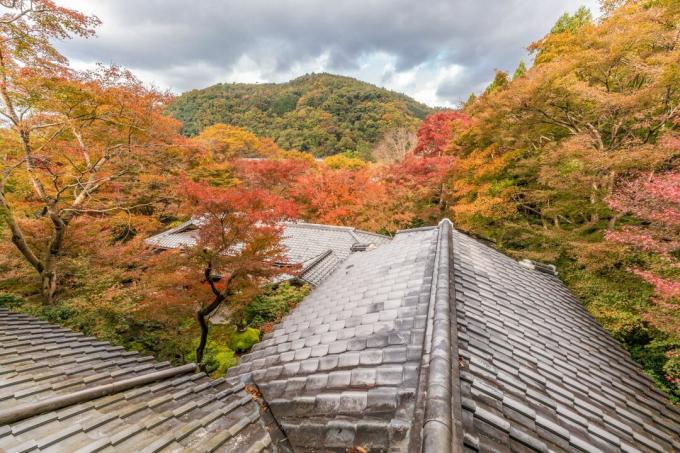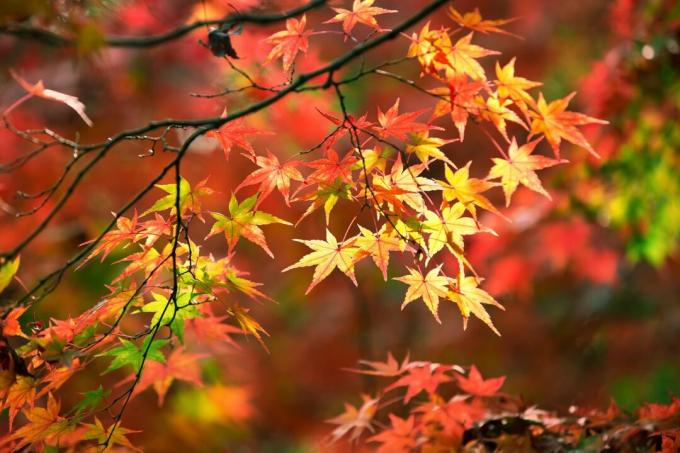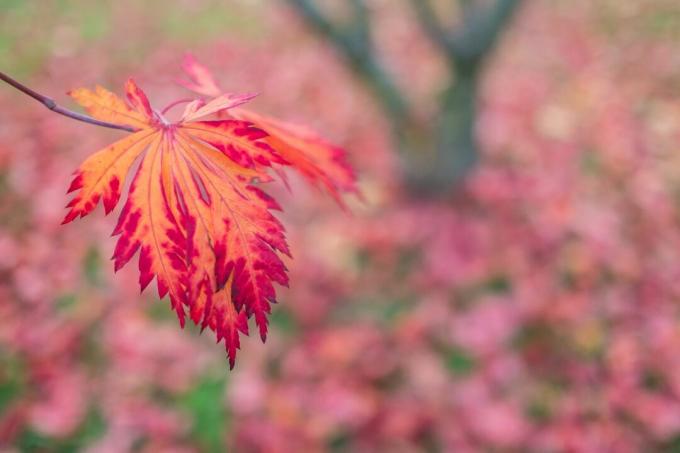The Japanese maple from the Far East has no special requirements, but is still happy about fertilization. We show you how to properly fertilize maple.

Maple (Acer) is a diverse genus of trees that can be found in temperate latitudes around the world. While our native maple species such as the Norway maple (Acer platanoides) and the sycamore (Acer pseudoplatanus) can grow into huge trees, Japanese maple species usually remain small. All the more impressive is their splendid autumn colors, which meanwhile transform many gardens into a true color spectacle. The two most common types are the real Japanese maple (Acer japonicum) and the Japanese maple (Acer palmatum). These two are very similar and are both commonly referred to as the Japanese maple.
Although the most varied sorts, even different types, are counted among Japanese maples, they have quite similar claims. No wonder, because they all come - as the name suggests - from Japan. There they grow naturally in forests that are rather humid and mildly tempered due to their proximity to the sea. And if the living space is so similar, then it is also the needs and demands that the plants make.
The basic rule of fertilization is: The most beautiful autumn colors are those of the Japanese maple that were least fertilized. So less is definitely more. The decorative plants usually grow on stony ground in their home, where nutrients are not exactly sown in abundance. Therefore fertilize as needed and sparingly.

The perfect time to fertilize maple
The growing season for the Japanese maple begins in spring, between April and May. Then it is time to supply the expansive plant with nutrients. To do this, only choose slow-release fertilizers that release their nutrients over time. This one-time fertilization in spring is completely sufficient for the undemanding plant. A later fertilization can even lead to damage in winter if the plant does not stop growing in time due to too many nutrients.
This is how you fertilize maple properly
Japanese maple should not be over-fertilized. Too much affects the stability, health and foliage color of the plant. Excess nitrogen in particular can lead to susceptibility to cold and instability.

Planted specimens often do not even have to be fertilized at all. In their environment there are usually enough nutrients that the plants can reach with their roots. In particular, if you do not remove the fallen leaves, sufficient nutrients will always be available. Container plants, on the other hand, do not have such a rich selection and enjoy long-term fertilization that they receive in spring.
Organically fertilize maple: application recommendation
The best organic fertilizer for Japanese maple is its own leaves. These contain all the nutrients the maple needs. As soon as they fall from the tree, they are decomposed by an army of soil creatures. In this way, the nutrients contained are released again for the plant and can be reabsorbed.

However, if you remove the leaves in autumn, important nutrients will be deprived. Organic fertilizers such as ours create a balance here Plantura organic tomato fertilizer. This contains exactly the right nutrient ratio to get the plant through the year, regardless of whether it is planted out or in a pot. When applying the fertilizer, note that the Japanese maple is a shallow root. Do not dig too deep when mixing in the fertilizer so as not to damage the roots.
They are also well suited for the supply of nutrients Horn shavings, while Damn should be used with caution due to its high nitrogen content.
Fertilize maple with minerals
If you decide in favor of mineral fertilizers, you should also value the long-term effect here. Mineral fertilizers are usually quickly available for the plant, but must therefore also be given very regularly. That quickly becomes too much for the Japanese maple. It is therefore better to choose a depot fertilizer with which you supply the tree once in spring.
Naturally fertilize maple with home remedies
As with most plants, you can use your old Japanese maple Coffee grounds bring to use. Simply mix a portion of it into the top layer of soil in spring. Coffee grounds have the advantage that they have a certain acid content in addition to the nutrients. Since the Japanese maple feels comfortable at a pH value between 4.5 and 7, i.e. in the acidic to slightly acidic range, this home remedy is ideal. The nutrient content in coffee grounds is also not very high, which is only good for the already undemanding maple.
